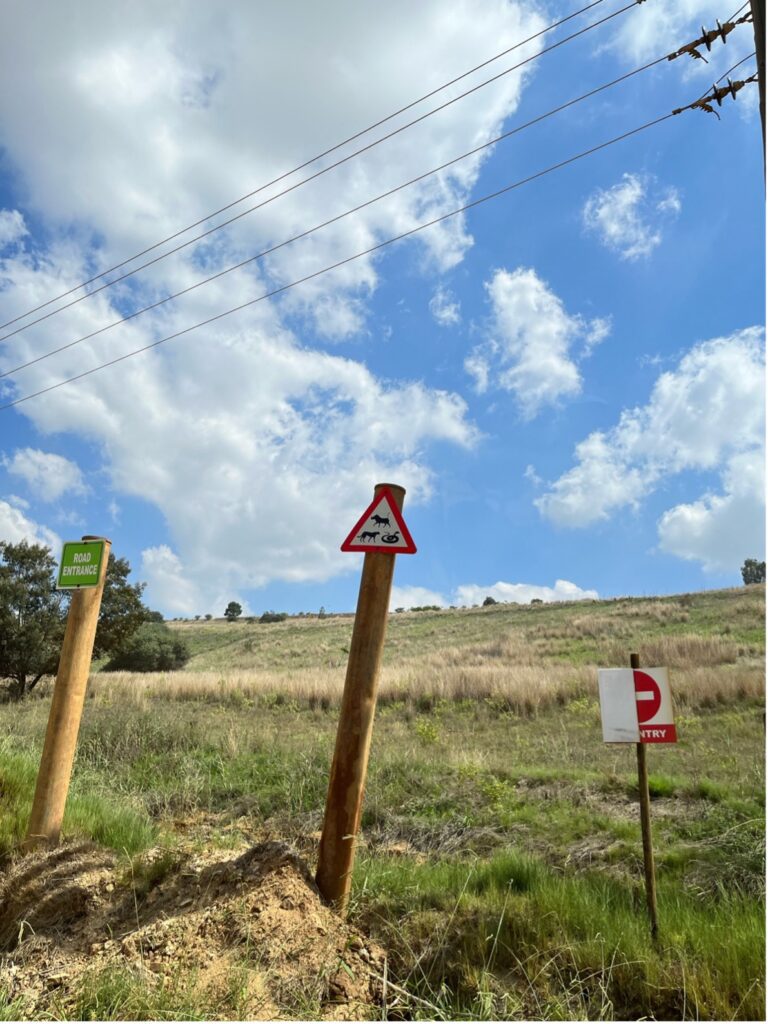Location, Location, Location

Image Credit: Ferreira Mine Museum in the basement of Standard Bank headquarters, Johannesburg. The colour scheme and general vibe could fool one to believe it to be a century ago in an oil shale mine of Ida-Virumaa, Estonia.
We know that in real estate all that matters is a location. When selecting a site for heavy industry, the ‘stars have to align’: the availability of raw materials (e.g., railway) and energy; qualified human capital in a nearby city; export opportunities (e.g., port), and so on. In mining we don’t get to choose. It’s ‘environmental determinism’ in its purest form: we have to dig where the resource lies in Earth’s crust and nowhere else. The only alternative is not to mine at all.
The University of the Witwatersrand faculty we met during the Post-Institute event did not fail to note, with nearly identical phrasing, that Joburg’s raison d’etre was gold mining. As a geographer I appreciated Craig Sheridan’s explanation of Johannesburg’s location on a continental watershed divide, causing extra water issues for the city in addition to the Acid Mine Drainage caused by pyrite. ‘Load shedding’ (a scheduled electricity outage due to incapacity in the national electricity grid) surprised me by how quickly it became a quotidian normality.
On the day of our arrival, the Dlala Nje Inner City Tour, including Ferreira Mine Museum, pinpointed that we were walking above Witwatersrand conglomerate where the first miners were of Cornish origin and showcased the hijacked buildings in the most destitute city districts – setting it in sharp contrast with Ida-Virumaa, Estonia where depopulation is the main concern. On the last day we visited the Apartheid Museum that also features an exhibition on the world’s largest gold rush in the context of a melting pot of nations, adding a historical perspective on the problems Johannesburg is facing today. Hopefully the laws of any country prevent opening a new mine without a plan in place for the landscape’s future. This would make all mining landscapes “post-extractivist” from the onset.
Against all odds, on our ‘day out’, the Post-Institute offered a wonderful comparative perspective and several of us had flashbacks to Estonia’s Ida-Virumaa – a flat landscape with waste heaps. I felt we were getting closer as the roads got bumpier. Some abandoned buildings and shabby informal settlements appeared. Followed by barbed wire (there is by no means lack of it anywhere) and restrictive signage: universal code for mining landscapes. Here I would like to take the opportunity to mention the “MINELIVES READER”, which introduces the region in depth (Favaro and le Roux).

Comparing and contrasting the Ida-Virumaa and Brakpan regions brought into relief some of the socio-spatial impacts of resources. Although oil shale is referred to as ‘brown gold’ in Estonia (in Ireland brown gold refers to peat/turf), where some other natural resources are not abundant (uranium is not available in worthwhile quantities in Sillamäe and Paldiski, and phosphorite is not mined currently for socio-environmental-political reasons (Galbreath 2009, Liivik 2022)), nobody is tempted to dig it illegally. Oil shale powers almost all the nation and provides energy independence from Russia. By contrast, the ERGO Plant reprocesses gold from the Brakpan Tailings Storage Facility, an 8 km tailings site, recovering 5–7 kg of gold per month for the elite. But men, their machinery (whether with Artificial Intelligence or not), and masculinity are mainstays.

On the other hand, using new technologies to reprocess previously mined material in order to extract gold is good, despite the large quantities of waste water and electricity. Thus, Brakpan may be a post-mining, but not a post-extractivist, landscape.
We saw how wind turbines and solar panels were used as a way to ease some of the inconveniences associated with load shedding, but as Tomas Buitendijk has mentioned: “… every form of energy production can – or should – be considered a form of extractivism” (2023). The Estonian Maritime Spatial Plan has envisaged offshore wind farms in the west of the country but local communities are claiming that it will ruin their sunsets and arguing for turbines to be placed in the already ‘sacrificed zone’ (Reinert 2018) of Ida-Virumaa in the east.

We should not hide our life sustaining systems: infrastructure is landscape (Strang 1996). Simultaneously all the ebbs and flows of capitalism turn out to be especially obvious surrounding metropolitan areas – landscape operations become infrastructural (Bélanger 2016). Like in all old mining areas, natural succession happens and it was heart-warming to see an old coal mining area transformed into Marievale Bird Sanctuary, a part of which belongs to Blesbokspruit Ramsar site.
– ANU PRINTSMANN, Tallinn University
Works Cited
Bélanger, Pierre. 2016. Landscape as Infrastructure. A Base Primer. Abingdon: Routledge.
Buitendijk, Tomas. 9 June 2023. “Post-Extractivist Landscapes and the Renewable Future”. https://extractivistlegacies.org/2023/06/09/renewable-future.
Favaro, Sabina, and Hannah le Roux (compilers). An extract from the MINELIVES READER. LONGUE DURÉE of the WEF NEXUS. Learning from the Gauteng and Limpopo Regions to develop an interdisciplinary approach in occasion of the WiSER Post-Extractivism Post-Institute Seminar Short Tour – Johannesburg, 30th November 2023. https://extractivistlegacies.org/wp-content/uploads/sites/10/2024/01/231120_WiSER-TourFULL_reduced.pdf.
Galbreath, David J. (ed.). 2009. “From Phosphate Springs to ‘Nordstream’: Contemporary Environmentalism in the Baltic States”. Journal of Baltic Studies, 40 (3).
Liivik, Olev. 2022. “Vastuseisust protestideni: võitlus fosforiidikaevanduste vastu 1970. ja 1980. aastate Eestis”. Methis Studia Humaniora Estonica, 24 (30): 132−155. DOI: 10.7592/methis.v24i30.22110.
Reinert, Hugo. 2018. “Notes from a projected sacrifice zone”. ACME, 17 (2): 597–617.
Strang, Gary L. 1996. “Infrastructure as landscape”. Places 10 (3): 8–15.